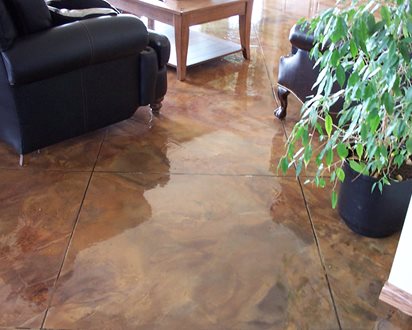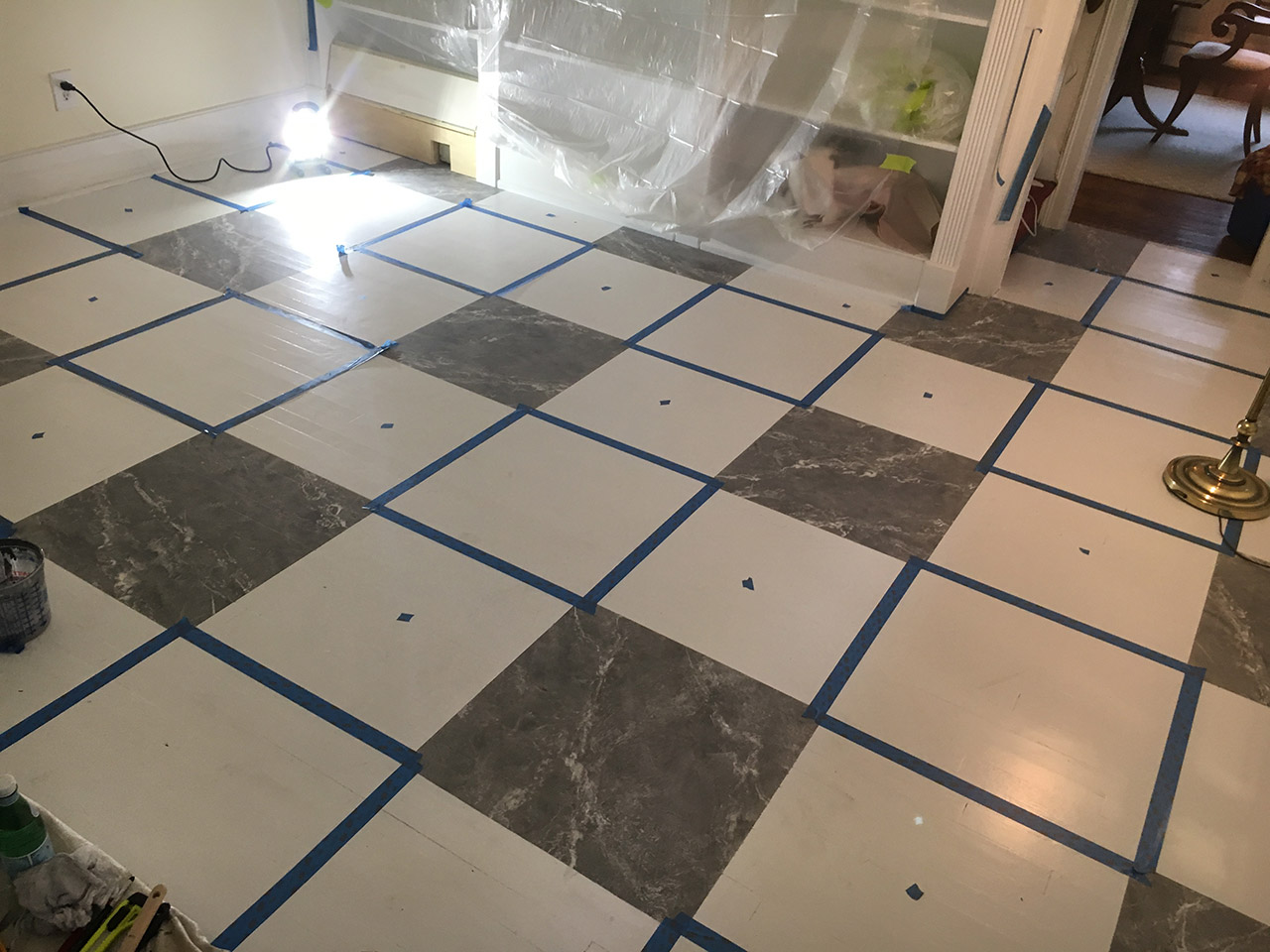Have you ever looked at your marble floor tiles and thought, “I wish they were a different color?” Or maybe you’re tired of the high-maintenance nature of marble and want a more durable and easy-to-clean option. While painting over marble might sound like a radical idea, it’s actually a feasible and budget-friendly way to transform the look of your floors — but only if you do it right.

Image: viewfloor.co
This guide will explore the ins and outs of painting marble floor tiles, from the reasons why it might be a good idea to the challenges you might encounter. We’ll cover everything you need to know before you pick up a paintbrush, including choosing the right paint, preparing your tiles properly, and applying the paint for a professional-looking finish.
Reasons to Paint Over Marble Floor Tiles
Before we dive into the nitty-gritty of how to paint marble floors, let’s take a look at why you might even consider this approach.
- Updating Your Home Décor: Marble floors are known for their luxurious feel, but their classic elegance can sometimes feel dated. A fresh coat of paint can be a cost-effective way to give your outdated marble floors a modern makeover.
- Matching Your Style: If you’re redecorating a room and your existing marble tiles clash with your new décor, painting them can bring the floors in line with your aesthetic vision. You can achieve the perfect color to tie the room together, creating a cohesive and harmonious look.
- Covering Up Imperfections: Marble is a porous material that can be prone to staining. Painting your tiles can effectively hide blemishes, cracks, or discoloration, offering a clean and pristine surface.
- Creating a Budget-Friendly Alternative: Replacing existing marble tile can be expensive, especially if you’re dealing with large areas. Painting the tiles offers a budget-friendly way to transform the look of your floors without the cost of a full replacement.
Choosing the Right Paint for Your Marble Floor Tiles
The success of your marble tile painting project depends heavily on selecting the right type of paint. Not all paints are made equal, and some are better suited for this unique application than others.
- Epoxy Paint: Epoxy paint is a durable, high-performance coating that is specifically designed for floors. It forms a tough, chemical-resistant barrier that can withstand heavy foot traffic and moisture. It’s a popular choice for garages, workshops, and other high-wear areas.
- Acrylic Paint: Acrylic paints are water-based and have a smooth, even finish that can be easily applied to smooth surfaces like marble. They offer good adhesion, but they might not be as durable as epoxy paint when it comes to wear and tear.
- Rubber-Based Paint: This type of paint offers excellent adhesion and a flexible finish that can handle movement and expansion. It’s a good option for areas where you need a water-resistant coating, such as bathrooms or kitchens.
- Specialty Floor Paint: Many paint manufacturers now offer specialized floor paints specifically formulated for use on concrete and other hard surfaces. These paints are typically durable, stain-resistant, and offer a wide range of color choices.
Important Note: Always check the manufacturer’s instructions and recommendations for your chosen paint. Ensure that the paint is suitable for use on marble and adheres well to its surface.
Preparing Your Marble Floor Tiles for Painting
Preparation is key for a successful marble floor paint job. Here’s what you’ll need to do:
- Clean the Floor: Before applying any paint, make sure your marble tiles are clean and free of dirt, grease, and debris. Use a mild detergent, warm water, and a scrub brush to remove any buildup. Thoroughly rinse and dry the tiles completely before proceeding.
- Sand the Surface: To ensure optimal paint adhesion, sand the surface of the marble tiles using a fine-grit sandpaper (100-120 grit). This will roughen the surface slightly and create more grip for the paint.
- Patch Cracks and Holes: Fill in any cracks or holes in the marble floor tiles with a suitable patching compound. Let the compound dry completely before proceeding to the next step.
- Apply a Primer: A primer helps to create a uniform surface for the paint to adhere to, preventing uneven color and improving the overall finish. Use a primer designed for masonry or concrete surfaces.
- Protect Surrounding Areas: Before painting, tape off the surrounding areas (walls, baseboards, etc.) to prevent unwanted paint spills and drips.

Image: viewfloor.co
Painting Your Marble Floor Tiles
Now that your marble floor tiles are prepped and ready, it’s time to apply the paint.
- Start with a Thin Coat: Apply the paint evenly using a high-quality paint roller or brush. Work in small sections, using light, even strokes to cover the entire surface of the tile.
- Let the Paint Dry: Follow the manufacturer’s recommended drying time to ensure the paint completely sets. If necessary, apply a second coat for maximum coverage and a smooth, even finish.
- Seal the Finish: After the paint has fully dried, you can add a sealant to protect your newly painted marble floors. A sealant will help to create a protective layer that will resist stains, scratches, and wear and tear.
Important Considerations and Tips
Here are some key points to keep in mind for a successful marble floor painting project:
- Ventilation: Ensure adequate ventilation while painting and during the drying process. Open windows and doors to allow fresh air to circulate.
- Wear Protective Gear: Wear gloves, goggles, and a mask to protect your skin and respiratory system from the paint fumes.
- Work in Small Sections: Painting an entire floor in one go can be overwhelming. Start with a small section at a time, applying the paint evenly and neatly.
- Wait for Complete Drying: Allow the paint to dry completely before walking on the floor or placing furniture on it.
- Test a Small Area: Before you commit to painting your entire marble floor, try painting a small area first. This will help you see how the paint looks on the surface and ensure you’re happy with the finish before you proceed with the entire project.
Can You Paint Over Marble Floor Tiles
Conclusion
Painting over marble floor tiles is a great way to revitalize your floors, achieve a new look, and create a budget-friendly alternative to replacing them altogether. By carefully selecting the right paint, prepping your tiles properly, and following the proper painting techniques, you can achieve a professional and long-lasting finish.
Remember that patience and diligence are key to a successful project. Take your time, prepare the surface well, and follow the manufacturer’s instructions to ensure your newly painted marble floors are a beautiful and durable addition to your home.





